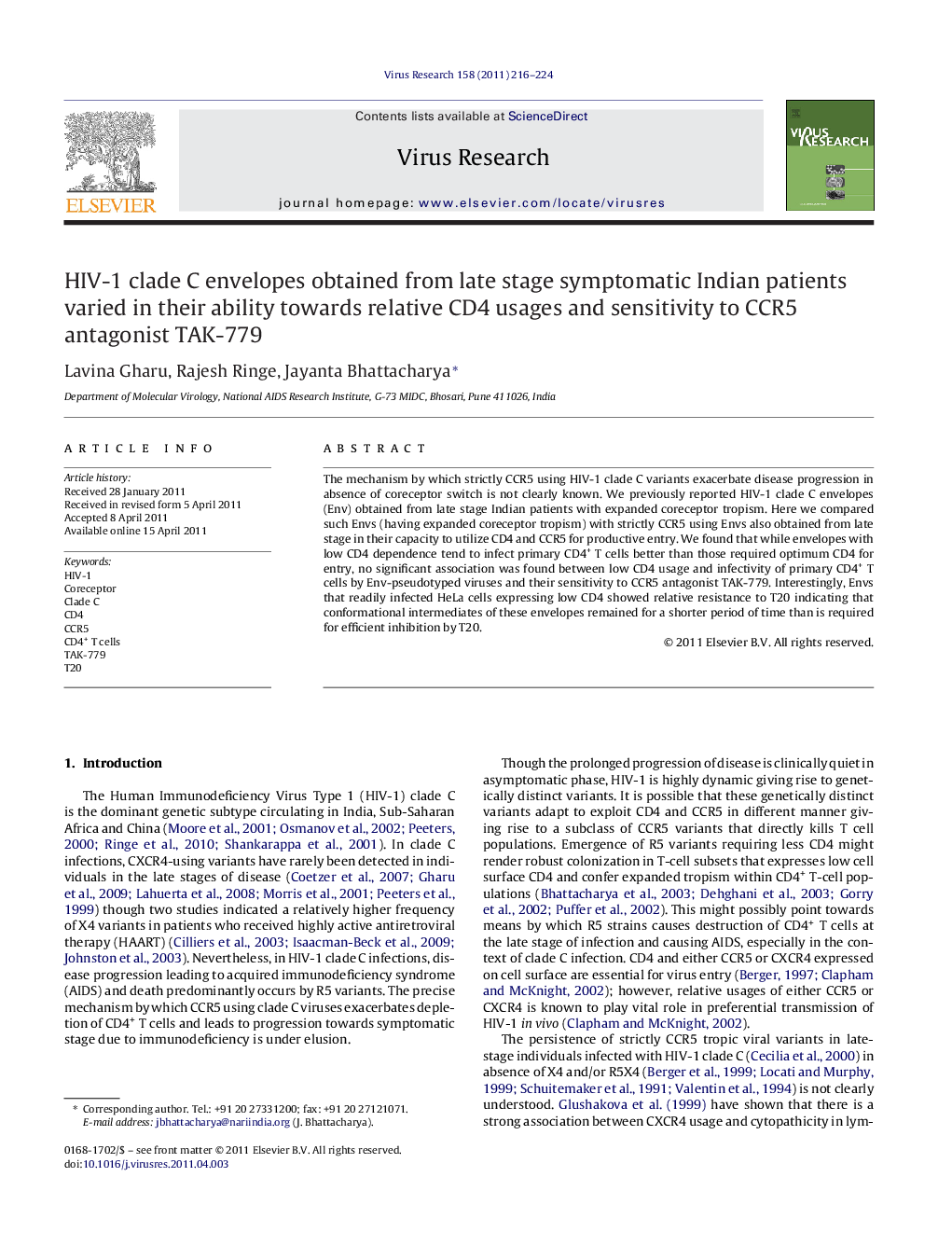| Article ID | Journal | Published Year | Pages | File Type |
|---|---|---|---|---|
| 3429009 | Virus Research | 2011 | 9 Pages |
The mechanism by which strictly CCR5 using HIV-1 clade C variants exacerbate disease progression in absence of coreceptor switch is not clearly known. We previously reported HIV-1 clade C envelopes (Env) obtained from late stage Indian patients with expanded coreceptor tropism. Here we compared such Envs (having expanded coreceptor tropism) with strictly CCR5 using Envs also obtained from late stage in their capacity to utilize CD4 and CCR5 for productive entry. We found that while envelopes with low CD4 dependence tend to infect primary CD4+ T cells better than those required optimum CD4 for entry, no significant association was found between low CD4 usage and infectivity of primary CD4+ T cells by Env-pseudotyped viruses and their sensitivity to CCR5 antagonist TAK-779. Interestingly, Envs that readily infected HeLa cells expressing low CD4 showed relative resistance to T20 indicating that conformational intermediates of these envelopes remained for a shorter period of time than is required for efficient inhibition by T20.
► Compared envelopes with expanded coreceptor tropism with those that are strictly CCR5 using for their capacity to utilize CD4 and CCR5. ► Low CD4 dependent envelopes infect primary cells better than those that required optimum CD4 for entry ► No association between low CD4 usage and sensitivity to TAK-779 ► Envelopes with low CD4 usage showed relative resistance to T-20 ► Data throw important insight in disease transmission in late stage in context of subtype C HIV-1 variants.
